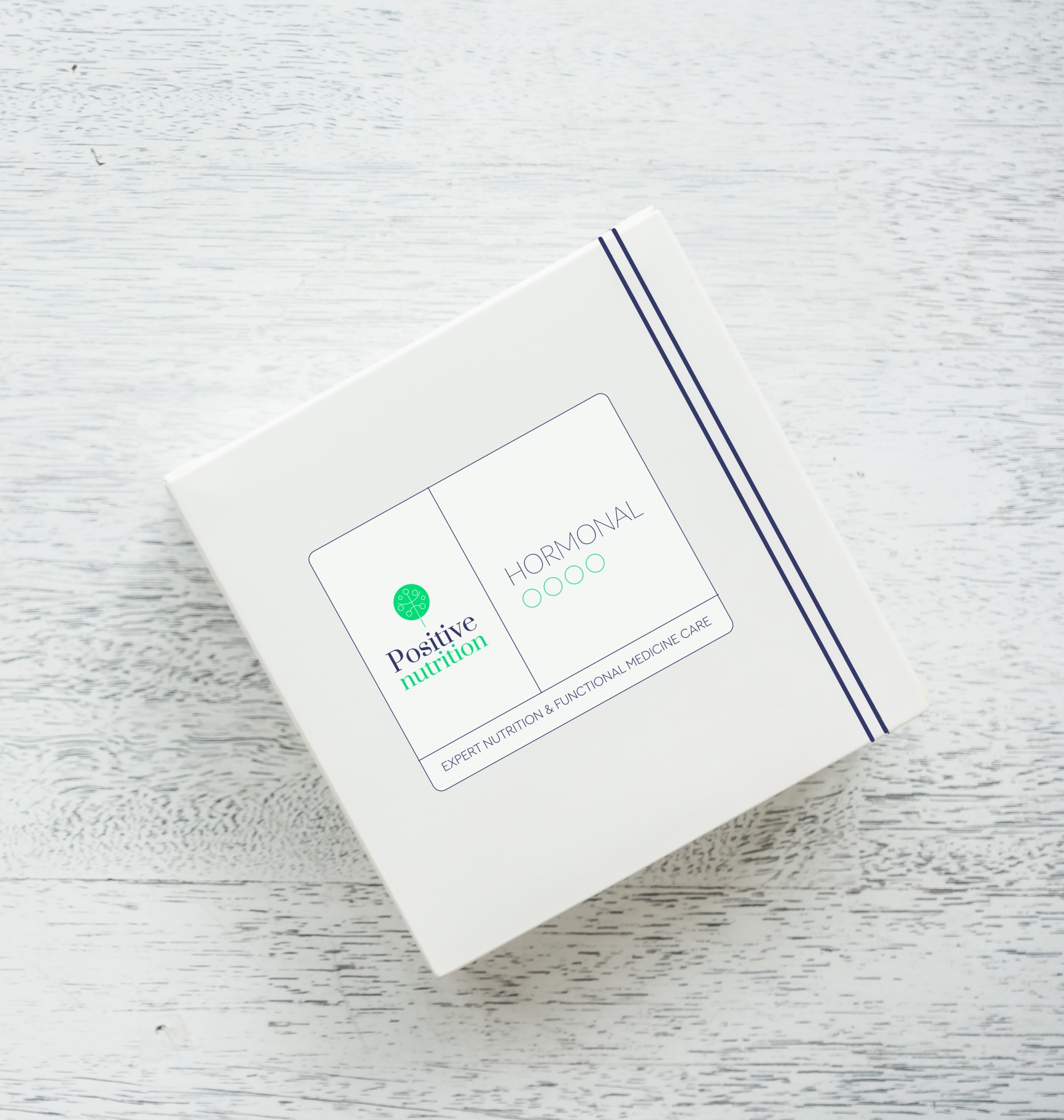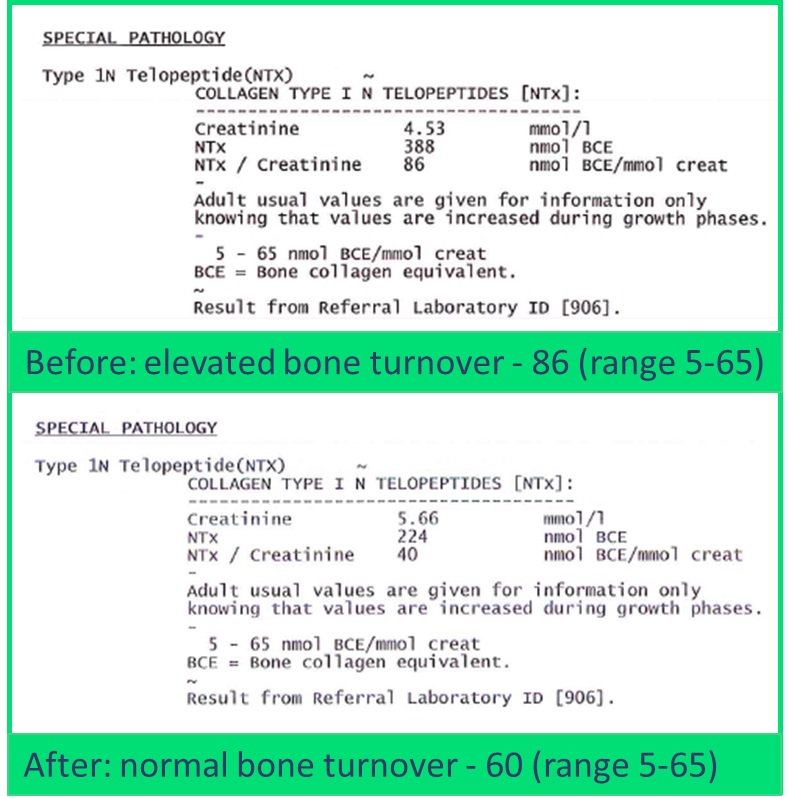Bone Turnover Test


Bone Turnover Test
€265 + phlebotomy
While a bone density scan is the gold standard of diagnosing established osteoporosis, identifying your current rate of bone loss is the key to preventative treatment. If you make positive changes to your diet and lifestyle to improve bone health, an improvement in bone turnover is measurable by a repeated test.
Who can benefit from this test?
Your nutritionist may recommend this test due to the presence of one or more of the following:
- Diagnosis of osteoporosis or osteopenia
- Post-menopause bone health
- Family history of osteoporosis
- Risk of bone density loss due to diet, certain conditions or medications

Learn More about our Bone Turnover Test
Blood test (phlebotomy)
More than 90% of your bone matrix consists of type 1 collagen. Collagen is the main structural component of bone, the matrix which is mineralised by calcium and other minerals. During normal bone metabolism, mature type 1 collagen is constantly broken down for replacement by new collagen. This is called bone turnover. During the breakdown process, small fragments of the collagen matrix pass into the blood stream and are excreted via the kidneys. During physiologically or pathologically elevated bone resorption (e.g. in old age or as a result of osteoporosis) type 1 collagen is degraded at an increased rate. This results in an increase of the fragments excreted, which can be measured in the urine as NTx.
At the same time, while new bone is being made or the collagen is being replaced, procollagen amino terminal peptides (P1NP), is released during new collagen formation.
The rate of bone formation (P1NP) versus the rate of bone breakdown (NTx) is a very useful measure of your current rate of bone turnover. This is especially helpful if you have never had a DEXA scan (bone scan) or are in between scans. This test can be repeated e.g. in 3-6 months to show the progress of bone health which can be very helpful to know whether your protocol is working for you.
This test measures:
- NTx N-terminal collagen crosslinks (urine)
- P1NP - Procollagen amino terminal peptides (serum)
Louise was 60 years of age and had been diagnosed with osteopenia by DEXA scan. Her next scan was scheduled for 2 years time, so Louise wanted to try to improve her bone health as much as possible.
Her initial bone turnover test showed an elevated rate of bone loss, relative to her age. Though she had been recommended calcium, she also had important nutrients measured via our clinic. According to her test results, we designed a personalised supplement protocol to support bone health. She also addressed longer term gut issues that may have been prohibiting her nutrient absorption.
Louise changed her diet to include nutritious anti-inflammatory foods and good natural sources of calcium, magnesium, vitamin K and boron. She attended a physiotherapist for advice on appropriate exercise.
After 6 months, her markers of bone turnover had significantly decreased, showing that she had slowed the rate of bone loss. She maintained her protocol and at her next DEXA scan, her osteopenia had improved.
Key findings:
- At her first visit, the bone turnover marker was elevated showing increased bone break down
- After 6 months on her protocol, the bone turnover marker was in the normal range
